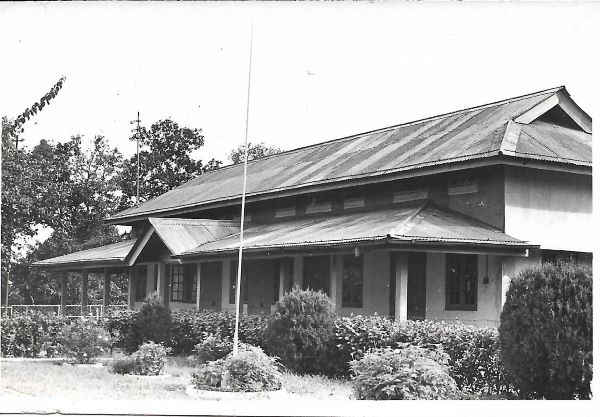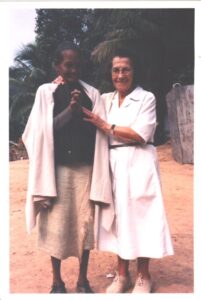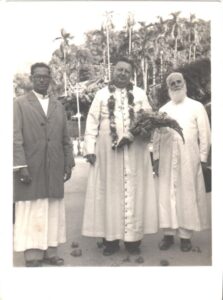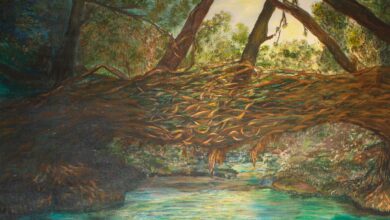Celebrating 50 years of a remarkable journey
The history of Tura Diocese & Catholic Church in Garo Hills is extraordinary

The year-long preparations for the Golden Jubilee celebrations of the Diocese of Tura culminated in the events of November 4-5 with a Triduum. On November 2 evening, a Holy Mass was held at Sacred Heart Shrine that was presided over by Rev. Andrew Marak and Bishop Jose Chirackal and the priests of Tura concelebrating.
This Mass was offered for all the faithful who passed away in the last 50 years, especially the missionaries, catechists and lay leaders.
The history of the Catholic Church in Garo Hills is extraordinary. The first Catholic missionaries to reside in Tura were Fr A. Pianazzy and Fr L. Rocca in 1933. From then on, several European missionaries followed by South Indian missionaries worked tirelessly to spread the Gospel in Garo Hills.

Pope Paul VI raised Tura into a diocese on April 7, 1973, by detaching territories from the Archdiocese of Shillong-Guwahati with Late Bishop Orestes Marengo as Apostolic Administrator. The diocese had at that time around 42,919 Catholics spread over the entire Garo Hills and the Goalpara and Kamrup districts of Assam. There were six parishes and a total of 21 priests — 16 religious and 5 diocesans. In the six years that he was Apostolic Administrator, Marengo opened eight new parishes and started recruiting young seminarians both from the locality and the South and invited some congregations of religious men and women to work in the new diocese.
On February 8, 1979, Saint Pope John Paul II relieved Bishop Marengo of the office of Apostolic Administrator. He appointed Rev. George Mamalassery of the diocesan clergy as the first bishop of Tura. The first task of the new bishop was to build a spacious seminary building to promote local vocations to the priesthood. During his term of 28 years as bishop, Mamalassery opened 24 more new parishes and in each of the old and new parishes, built a church, a presbytery, hostels for both boys and girls, a convent, a school and a dispensary. He invited 14 more women religious congregations and also the Claretians, Capuchins, Jesuits, Franciscan and Montfort brothers to serve in the diocese.
In 1992, when the Guwahati diocese was built, Damra parish and parts of Assam under the diocese of Tura were handed over to the new diocese, forming the major portion of the new diocese.
On the completion of 75 years of age on April 22, 2007, Pope Benedict XVI appointed Bishop Andrew R. Marak of the local clergy as successor to Bishop Mamalassery. Bishop Andrew followed the path traced by Bishop Mamalassery and continued to open new parishes, emphasising strengthening the Christian community’s faith. As the diocese grew both in size and number of faithful, in 2020, Fr. Jose Chirackal was appointed as Auxiliary Bishop of Tura.
Currently, the diocese has a Catholic population of 3,40,175 spread over 47 parishes and cared for by 114 priests — 58 belong to diocesan clergy and 56 to seven religious congregations. There are 316 sisters, belonging to 31 different congregations who serve in the diocese along with eight Montfort brothers in two communities. A sizeable number of the priests and religious belong to the local Garo tribe.

The growth of the Diocese of Tura in the last 50 years has been a great miracle. In the last five decades, not only the growth of the Catholics has been phenomenal and unparalleled but also the role played by the church in the progress and uplift of the five districts of Garo Hills has been pivotal. The Diocese of Tura, through its parishes and institutions in every nook and corner of the region, has actively contributed to education, healthcare, social services, counselling, and moral and religious education.
The Diocese of Tura has been at the forefront of providing quality education to thousands of children and youth in the region through Don Bosco College, Tura, Loyola College, Williamnagar, 22 higher secondary schools, 53 secondary schools and more than 100 primary schools and hostels.
More than 65,000 students are studying in Catholic educational institutions in Garo Hills today. The Diocese’s commitment to education has not only enhanced literacy but has also contributed to the overall socio-economic development of Meghalaya. The past pupils of Catholic institutions in Garo Hills hold important positions in society and public life today.
In the area of healthcare, the Diocese of Tura has made significant contributions to society through Holy Cross Hospital in Tura, 34 dispensaries and the five Primary Health centres of the state run by the Diocesan Social Service, Bakdil. The RSM Nursing School attached to Holy Cross Hospital, Walbakgre, is a prime institution. The Montfort Centre for Education Training of Teachers for differently abled children and taking care of them, the two old-age homes for the poor managed by Mother Teresa Sisters etc render unique service to the people of Garo Hills.
Moreover, the Diocese of Tura has been actively engaged in numerous welfare programmes, reaching out to the marginalised and vulnerable sections of society, especially during natural calamities and pandemics such as COVID-19. The co-operative societies and self-help groups led by church personnel have brought up substantial change in society. The Diocese of Tura has been at the forefront in fighting the social evils of the time and fostering peace during conflict times and acting as an agent of social change in all fields.
The Eucharistic Procession will follow the golden jubilee celebrations in Tura on November 26. The jubilee year will be concluded with the joint ordination of five Garo Priests, two diocesans, two Salesians and a Jesuit on December 2 at Don Bosco Mini stadium.




